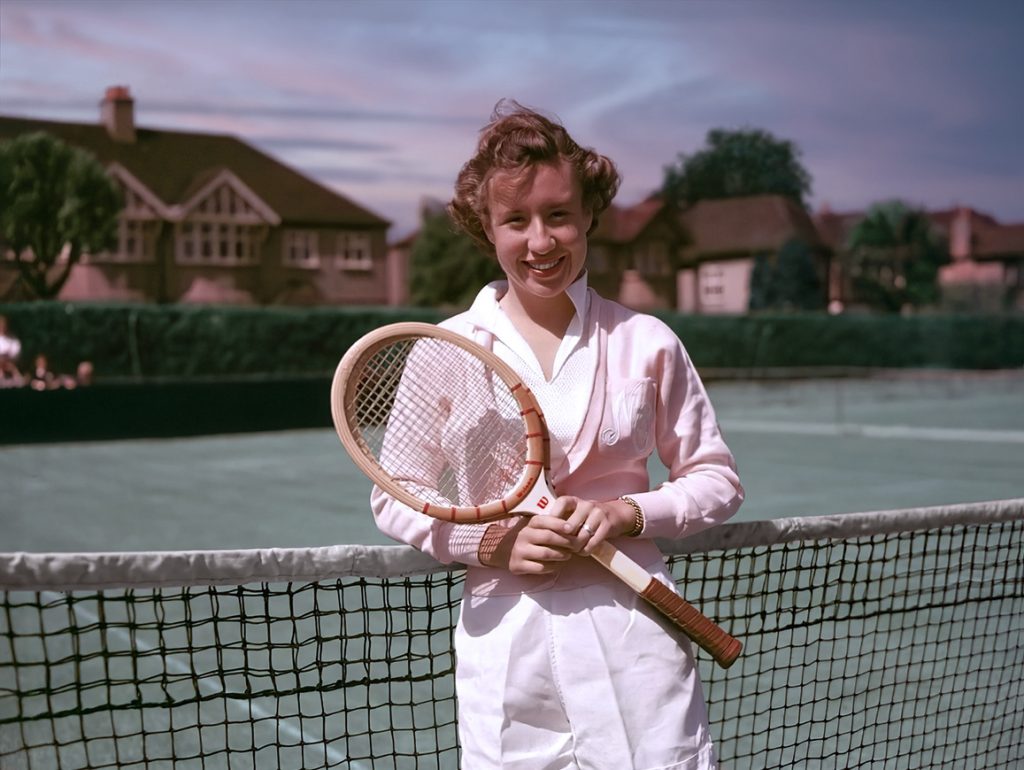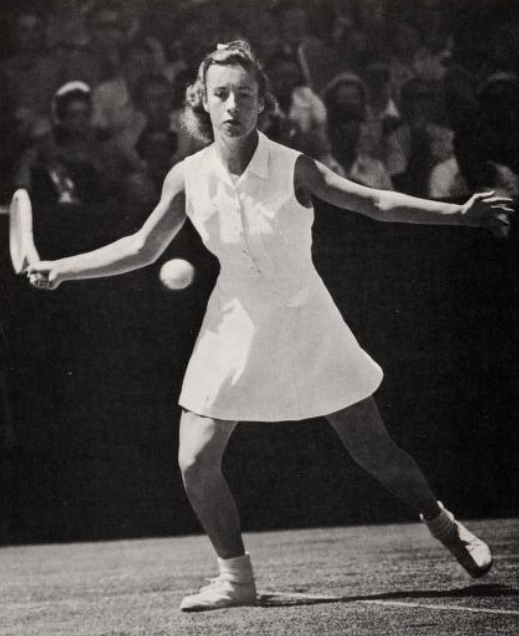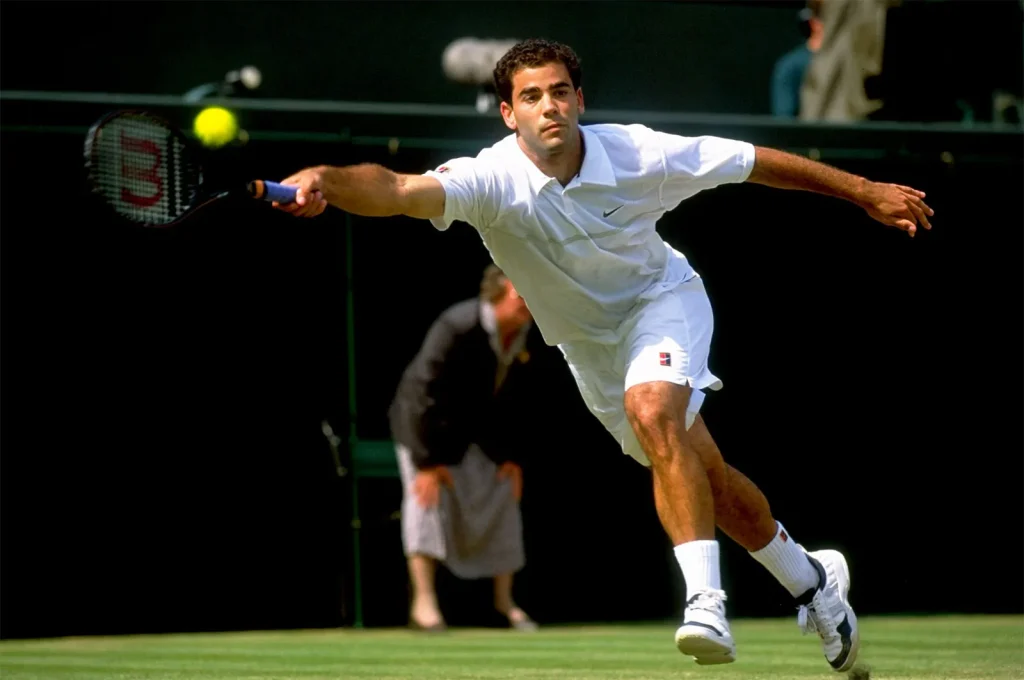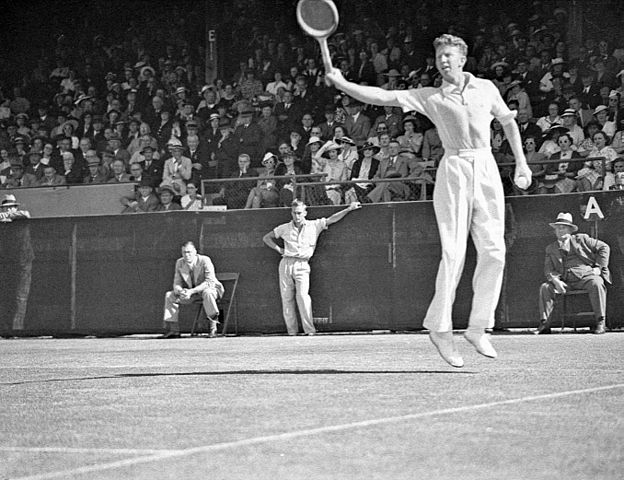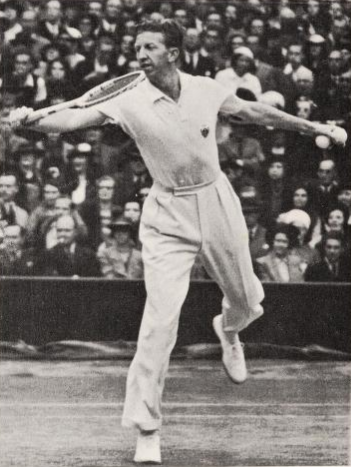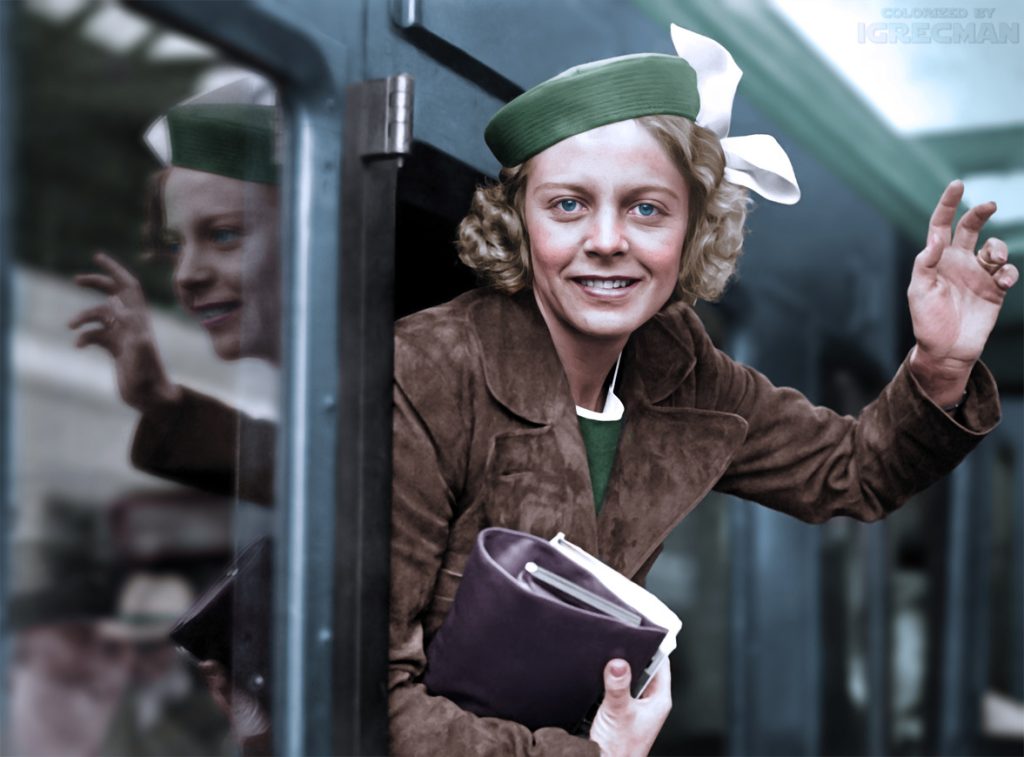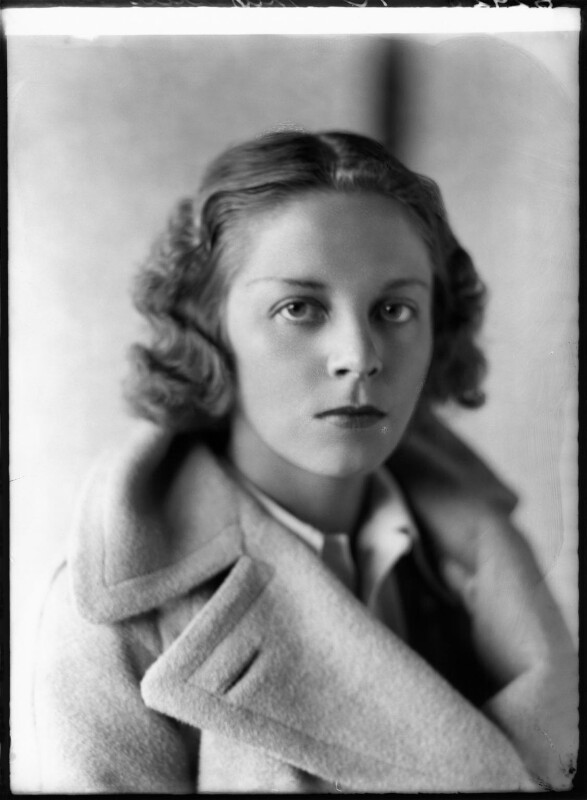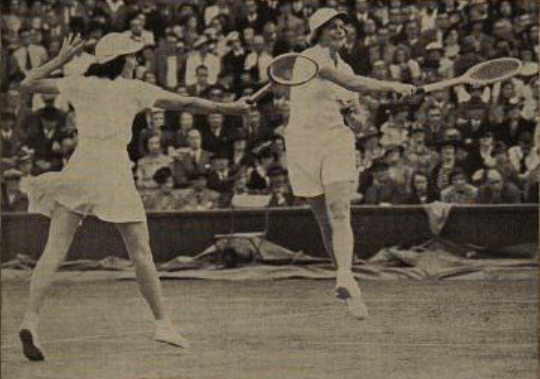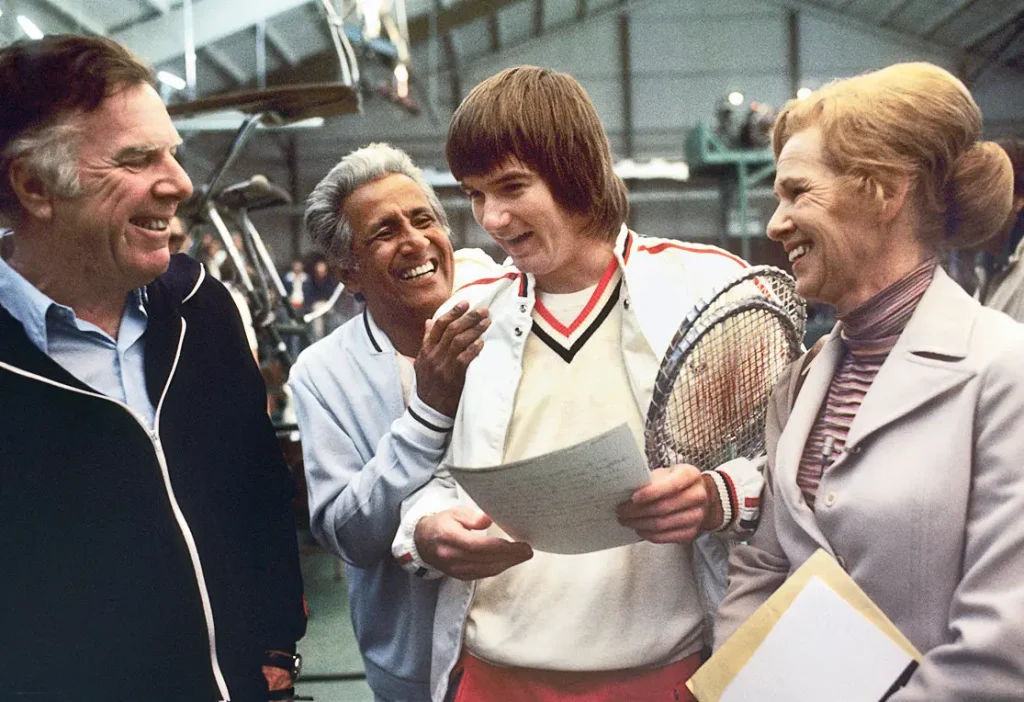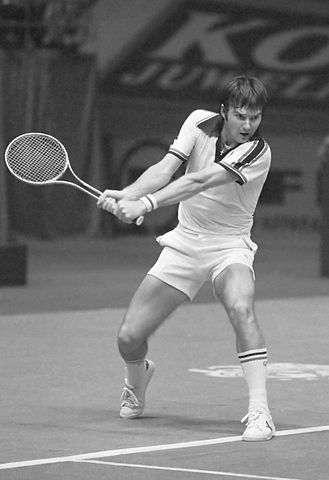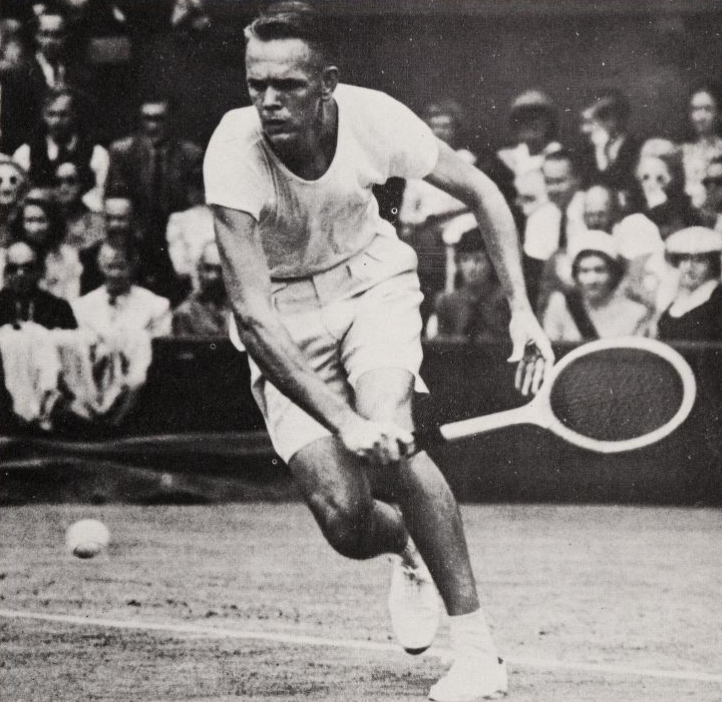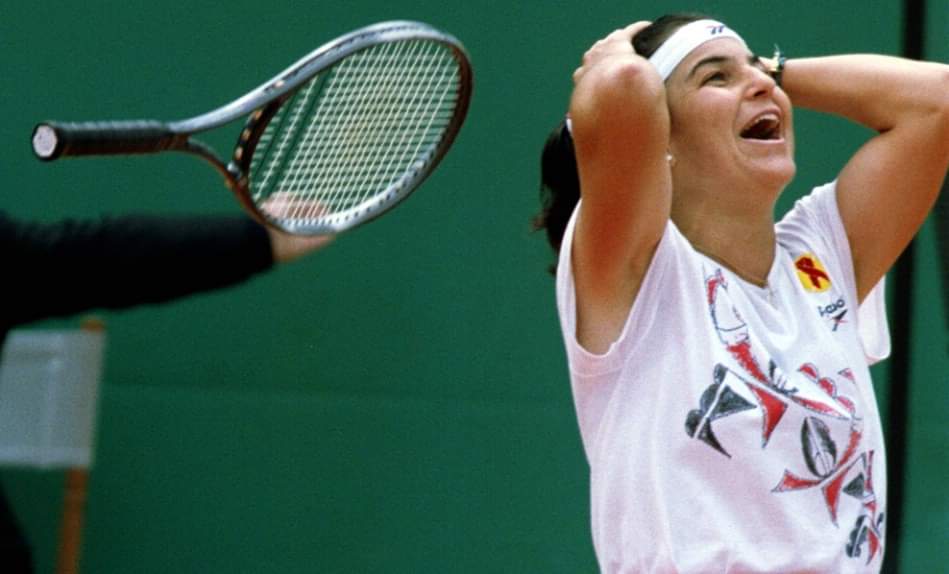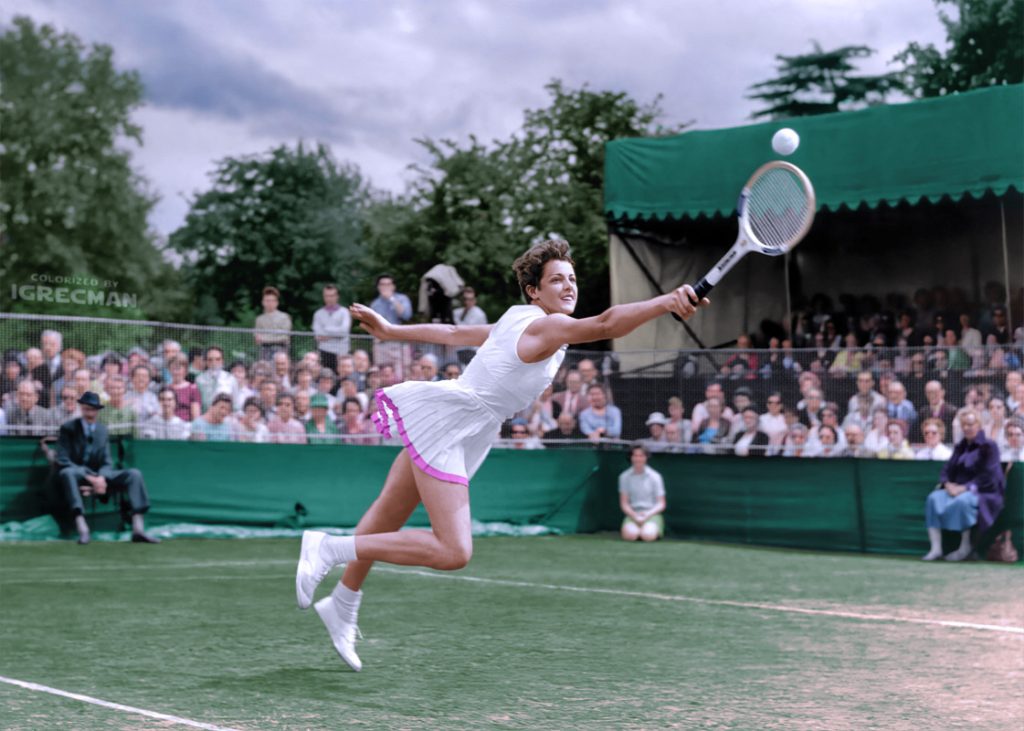
Colorization credit: Women’s Tennis Colorizations
I’m counting down the 128 best players of the last century. Beware of GOATs.
* * *
Margaret Court [AUS]Born: 16 July 1942
Career: 1959-77
Plays: Right-handed (one-handed backhand)
Peak rank: 1 (1962)
Peak Elo rating: 2,389 (1st place, 1971)
Major singles titles: 24
Total singles titles: 187
* * *
One knock on Margaret Court, during her playing days, was that she was dull. Journalist Grace Lichtenstein mentioned to a tour official that Margaret was one of the few players who didn’t talk to herself on court. “What,” he responded, “could she possibly think of to say?”
Before we go any further, let me venture a few guesses: You have an opinion about Margaret Court, it is not positive, and it is not because she is dull.
People change, and not always for the better.
Try to put all that off to the side for the moment. It’s more than Court is likely to do herself: As a Pentecostal minister, she rarely gives an interview that doesn’t dig her a deeper hole regarding her anti-gay views. But the Tennis 128 project is about identifying the greatest players of all time, not the most progressive, likeable, or politically savvy ones.
Even if we ignore her views on social issues, I’ll bet you still have some strong views about her legacy as a player. If you don’t–and kudos to you for that–you’ve surely heard her name over the last few years as Serena Williams repeatedly fell short of matching Court’s all-time record.
The tennis world is obsessed with grand slam counts, so experts have bent over backwards to explain why Serena’s 23 is better than, or at least qualitatively different from, Margaret’s 24. There are plenty of solid arguments in the American player’s favor, and we’ll get to some of them shortly.
Court in 2005, reminding Serena that she has 17 more slams to go
The downside to this “debate” is that Court has approximately zero defenders. There are good reasons for that, too, and I’m not about to take Margaret’s side. After all, she is 18th on my list and Serena ranks higher. But one-sided pile-ons tend to push the conventional wisdom too far to an extreme. Every time someone says that Court won her eleven Australian titles against a bunch of kangaroos, the world gets a little dumber.
If anything, the question of Court’s 24 versus Williams’s 23 should make it clear that grand slam tallies are not everything. The numbers themselves disguise a multitude of detail: Many of Court’s Australian titles were indeed cakewalks compared to their 21st-century equivalents. On the other hand, the focus on majors obscures the hundreds of other events that each player entered. Margaret, for her sake, won 163 singles titles away from the big four.
It’s okay to have a black-and-white view of the person Court has become. But to understand her place in tennis history, we need to embrace some shades of gray.
* * *
Court’s all-time record 24 major singles titles includes, as I’ve said, eleven in Australia. The Australian Championships of the amateur era were the extreme junior partner of the grand slam foursome. The field usually consisted of about 32 women, most or all of them from the host country.
Here are Margaret’s final-round opponents from her eleven slams Down Under:
- 1960, Jan Lehane
- 1961, Lehane
- 1962, Lehane
- 1963, Lehane
- 1964, Lesley Turner
- 1965, Maria Bueno
- 1966, Nancy Richey (walkover)
- 1969, Billie Jean King
- 1970, Kerry Melville
- 1971, Evonne Goolagong
- 1973, Goolagong
Note the absence of kangaroos. Lehane and Turner are the lesser-known names that stand out here. Both would be remembered as better players if they hadn’t suffered the ill fortune of spending their entire careers in Court’s shadow. Turner, who ranks around 200th of all time by the Tennis 128 algorithm, beat Margaret for the 1962 French title. Lehane wasn’t as strong, but she did reach the quarter-finals in half of her 14 major entries away from Australia.
The 1960 title, in particular, was about more than just Lehane. Margaret beat Bueno–the reigning Wimbledon and Forest Hills champion–in the quarters and defending champ Mary Carter Reitano in the semis.
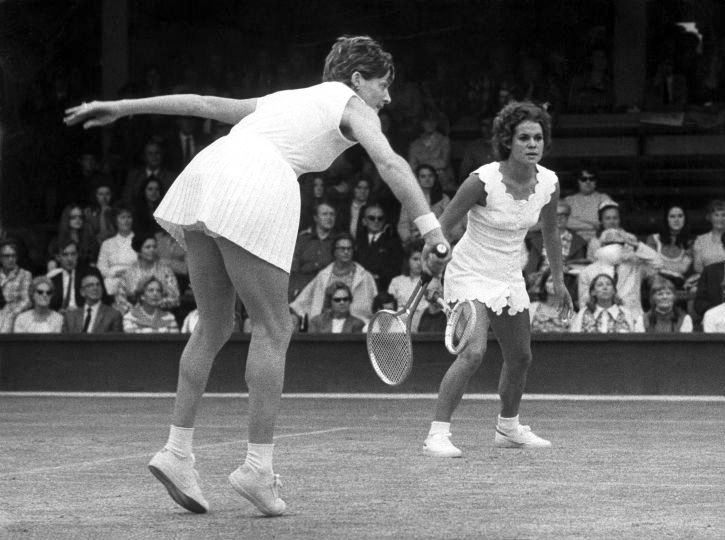
Credit: Anefo
The list of vanquished opponents doesn’t prove anything, but it does illustrate that most of these titles weren’t just handed to the best Australian. The fields were small–Margaret even got a first-round bye and needed only four victories in 1964–but I’m not sure it mattered. At the majors with larger draws, early upsets of top players were exceedingly rare. An extra round or two would’ve just given her something to do for an hour.
Last year, I analyzed every women’s grand slam back to 1960, weighting each title by the quality of the opponents the eventual champion had to face. By my measure, Aussie titles in the 1960s were about 40% easier to win than the other majors. They came closer to even in the 1970s. Adjust each individual title, and Court’s eleven shrinks to eight. Serena loses one, too–draw difficulty continues to vary, though to a more modest degree–so our revised slam count is Serena 22, Margaret 21.
You might find the process opaque or the results unsatisfactory; adjusting slam titles doesn’t give us any more of a runaway leader than the raw tallies did. The exact numbers don’t matter. The point is that relative to their eras, Serena’s major titles were more difficult to win–barely–than Margaret’s were. Demote the Pentecostal preacher if you’d like, but a fair assessment knocks her down only from “greatest of all time” to “one of the greatest of all time.”
* * *
That’s probably more than you ever wanted to read about 24-versus-23, so we’ll move on.
Inspired by Rod Laver’s 1969 Grand Slam, Court resolved to give her all to a similar effort in 1970. An ankle injury at Roland Garros nearly ended the dream before it began. She needed increasing doses of painkillers to hobble through Wimbledon, barely surviving a two-and-a-half-hour classic against Billie Jean in the final. Her doctor told her not to play Forest Hills at all. No way: Risking a permanent limp, she secured all four titles.
Somehow, the experts were underwhelmed. Herbert Warren Wind wrote in the New Yorker after Court secured the fourth leg of her Slam:
[P]eople in and around the game have always expected even more of Margaret Court than she has produced, because probably no woman has ever been so well equipped physically to play tennis. A big-boned, smoothly coordinated, attractive girl who stands five feet nine and weighs around a hundred and fifty pounds, she could pass for a sister of either Frank Sedgman or John Newcombe, those ruggedly handsome specimens of Australian manhood.
Margaret was considered a choke artist, an odd reputation for someone who would go on to win more than 1,100 matches. Wind echoed the conventional wisdom of the day that she “lost a number of matches (some of them to rather ordinary players) by suffering… strange attacks of nervousness.” It’s challenging to square that assessment with the historical record, since she didn’t come up short that often, especially against “ordinary players.”
The record does reveal days when Court took the scenic route to victory. When the nerves struck, “she would hit forehand after forehand yards out of court and serve streams of double faults.” Eventually, usually, she would regain her bearings and finish things off.
Australian analyst Paul Meltzer offered a compelling theory to explain why Court’s lapses manifested themselves the way that they did: She was a natural lefty. Like Maureen Connolly, she was told at an early age that ladies played tennis right-handed. Forced ambidextrousness could lead to a marvelous backhand, but it also meant that the serve and forehand would always be manufactured strokes. No amount of practice could stop them from breaking down under pressure.
Few opponents, though, could generate that pressure. Kerry Melville told Sports Illustrated in Court’s Grand Slam season:
I’ve tried every way to beat her, and the thing that works best is to throw everything into the first few games, try to stay with her, to win early. Put her under pressure like that and she gets rattled. You can beat her. But let her win a couple of games right off and it’s almost hopeless.
Melville played Margaret 27 times between 1963 and 1976. She rattled out just three victories.
* * *
The most compelling reason to give Court credit for her eleven Australian titles is that she won just about everything else. No matter how tough the draws, it’s hard to imagine her falling short. In seven of the eleven seasons she won Down Under, she also picked up at least one more major. In 1960, she didn’t have the means to travel abroad. In 1966, she took a break from the game and skipped Forest Hills. In 1971, she reached the Wimbledon final before realizing she was pregnant.
The fourth one-slam campaign was 1961, Margaret’s first time abroad. Still playing under her maiden name of Margaret Smith, the 19-year-old was part of only the fifth-ever Australian women’s team to make the trip to Europe. Harry Hopman had kept the Aussie men on top for a decade; it fell to his wife, Nell, to attempt the same with the nation’s women.*
* Before Nell Hopman became the disciplinarian chaperone of the Australian squad, she served a similar role for Maureen Connolly after Connolly split with her coach Eleanor Tennant. When Doris Hart, Mo’s planned doubles partner, had to pull out of the 1954 French Championships, 45-year-old Hopman stepped into the breach. They won the title. Nell played mixed, too, with Neale Fraser. She wasn’t quite so successful with Maureen on the other side of the net; they lost to Connolly and Lew Hoad in the quarters.
Margaret won six of the ten tournaments she entered on that initial trip, picking up four titles on French clay and two on English grass. By the time she arrived at Wimbledon, she had so thoroughly established herself that the seeding committee placed her second. Only the previous year’s finalist, Sandra Reynolds, stood higher. The smart money went for the young Australian.
Smith wasn’t quite ready to reach the top. She drew British hope Christine Truman in the quarter-finals. A topsy-turvy match of uneven quality laid the groundwork for Margaret’s later reputation as a choker. She won the first set, then lost the second after double-faulting twice to lose her serve at 3-4. In the decider, she earned match points at both 6-5 and 7-6, but fluffed a volley and missed a forehand wide. Truman scored the upset, 3-6, 6-3, 9-7.
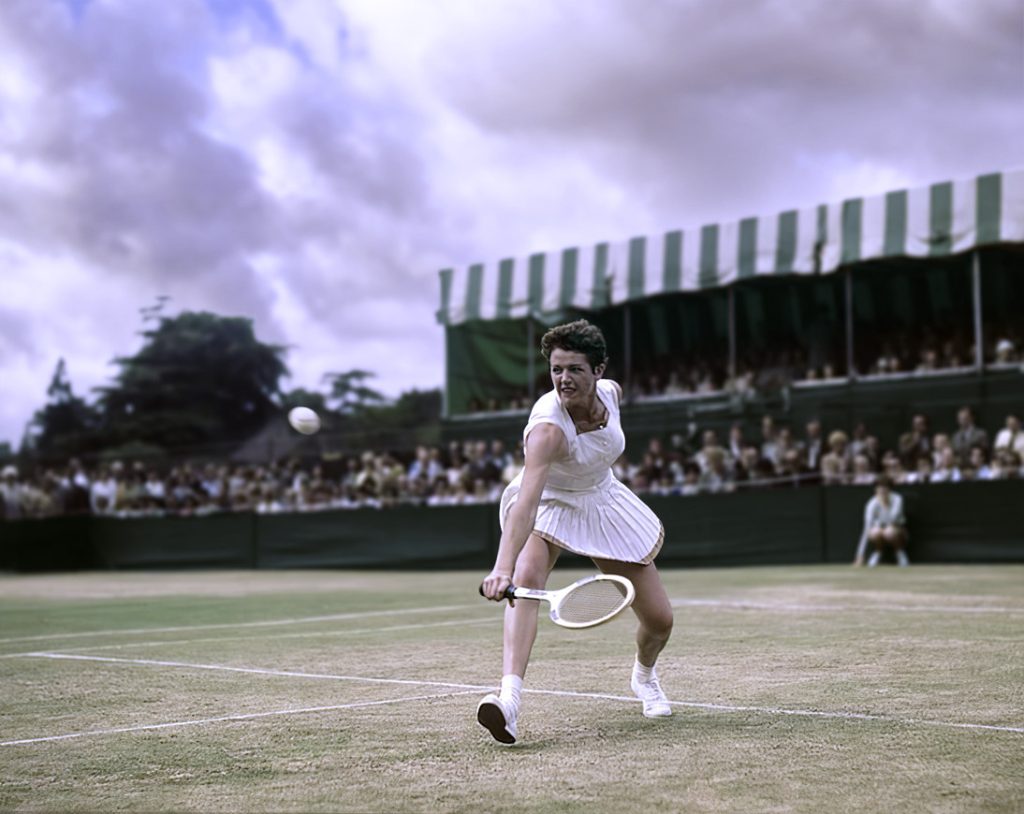
Colorization credit: Women’s Tennis Colorizations
A chance for revenge arrived in short order: Smith won an equally protracted quarter-final at Forest Hills to beat Truman there. But in the semis, the Australian ran into top seed Darlene Hard. Margaret started the match nervous and gave up her attacking game after missing several volleys early on. Hard solved the Smith serve, and the women traded seven consecutive breaks in the third set. Darlene proved to be the more tactically sound player, sending the challenger home, 6-4, 4-6, 6-3.
Pundits usually applauded Margaret more for her strength than her savvy. But aside from the occasional attacks of nerves, Smith rarely made the same mistake twice. After the loss at Wimbledon, she won eleven straight meetings with Truman. Hard followed her back to Australia for the 1961-62 season Down Under, and Margaret beat her four times, a streak she would extend to eight.
When Smith returned to Wimbledon in 1962, she was the unquestioned favorite and top seed. This time, she was ambushed in her first match by the hyperactive young American Billie Jean Moffitt, still four years away from her marriage to Larry King. Margaret learned from that one too. It would be four years and ten matches before she’d allow Billie Jean another set.
* * *
Every woman on the circuit quickly discovered that Margaret was as imposing as she looked. And she certainly looked imposing.
Later in her career, fellow players called her “The Arm”–possibly a Rosie Casals coinage. Casals told Grace Lichtenstein, “[W]hen Margaret came to the net all you saw was that big right one reaching in every direction as if it were infinitely stretchable elastic.”
A biomechanics lab tested Court and discovered that her arms were indeed three inches longer than the typical woman’s. Combine that reach with the assurance of a natural left-hander hitting a backhand volley, and there was nowhere to go.
Casals didn’t have any answers. Court beat her in 32 of 36 meetings, including 25 in a row between 1968 and 1973.
Virginia Wade was equally helpless. Wade compared Court to “a bull mastiff in the same cage with a white mouse.” The mix of big serves, blinding speed, and smothering net coverage simply rendered the other player irrelevant.
In a 1969 US Open semi-final, Wade held three set points on the Australian’s serve. “She came up with a series of points,” said Virginia, “that totally ignored my presence on the other side of the net.” From 4-5, 0-40, Margaret not only ran out the set, she finished the entire match in a flash, 7-5, 6-0.
Court and Wade met 31 times between 1965 and 1977, 20 of them in finals. Virginia, like Casals, managed only four victories.
* * *
When Court discovered she was pregnant in 1971, she could have easily left competitive tennis behind. She was 29 years old, she had won the 1970 Grand Slam, and she had won more major titles than anyone in the sport’s history.
When she returned–after a layoff of barely twelve months–even she couldn’t quite explain why. She denied it was about the money, though she piled up hundreds of thousands of dollars in prizes.
Whatever her reasons, her comeback was as astounding as the career that preceded it. Few women in the amateur era had competed at all after giving birth. Court, who had learned early on the benefits of weight training and roadwork from mentor Frank Sedgman, barely even needed to recover. Her son, Danny, arrived in March, and she played her first competitive matches–eight pounds lighter than before the pregnancy–in July.
Between October 1972 and the US Open in 1973, Margaret played 125 tournament matches. She lost only four–each one in three sets. With Danny and husband Barry in tow, she collected 24 titles in that span, including three-quarters of the 1973 Grand Slam. The season was marred by her embarrassing loss to Bobby Riggs in the Mother’s Day Massacre, and her performance was overshadowed by King’s victory in the second Battle of the Sexes match in September.
Still, by any measuring stick other than Riggs, Court was the best player in the game. More than a decade had passed since she first asserted a claim to that position.
As Billie Jean campaigned for equal prize money and other players such as Casals proclaimed their feminist credentials even more loudly, Margaret preferred to stand aside. The irony, then and now, is that judging by her life in those years, she was the most modern of them all. When she burned out in 1966, she left the circuit and opened a dress shop in Perth. After she got married, she went back on tour with her husband–whose career stood on hold–serving as a de facto assistant. She took a one-year maternity leave, then came back better than ever.
A friend of mine once joked that Court had a lot in common with Serena Williams. Both women took breaks from tennis to pursue careers in fashion, and both won titles as mothers.
Margaret Court is a tough woman to hold up as a hero. Even before she began speaking out on social issues, she wasn’t much of an ally to the ideological movement that lifted women’s tennis from an amateur-era sideshow to an equal partner in an ever-richer global sport.
Yet in just about every other way, she was the pioneer of her era. She led the first generation of great Australian women players. She cross-trained daily, lifting weights nearly two decades before Martina Navratilova took up the habit. She balanced family with Grand Slam titles when many of her peers juggled cigarettes and eight-tracks.
Fifteen years after her first major title, sportswriters still thought Margaret was boring. Whatever your final judgment of the person, you have to admit that her story was anything but.
* * *
Subscribe to the blog to receive each new post by email:
